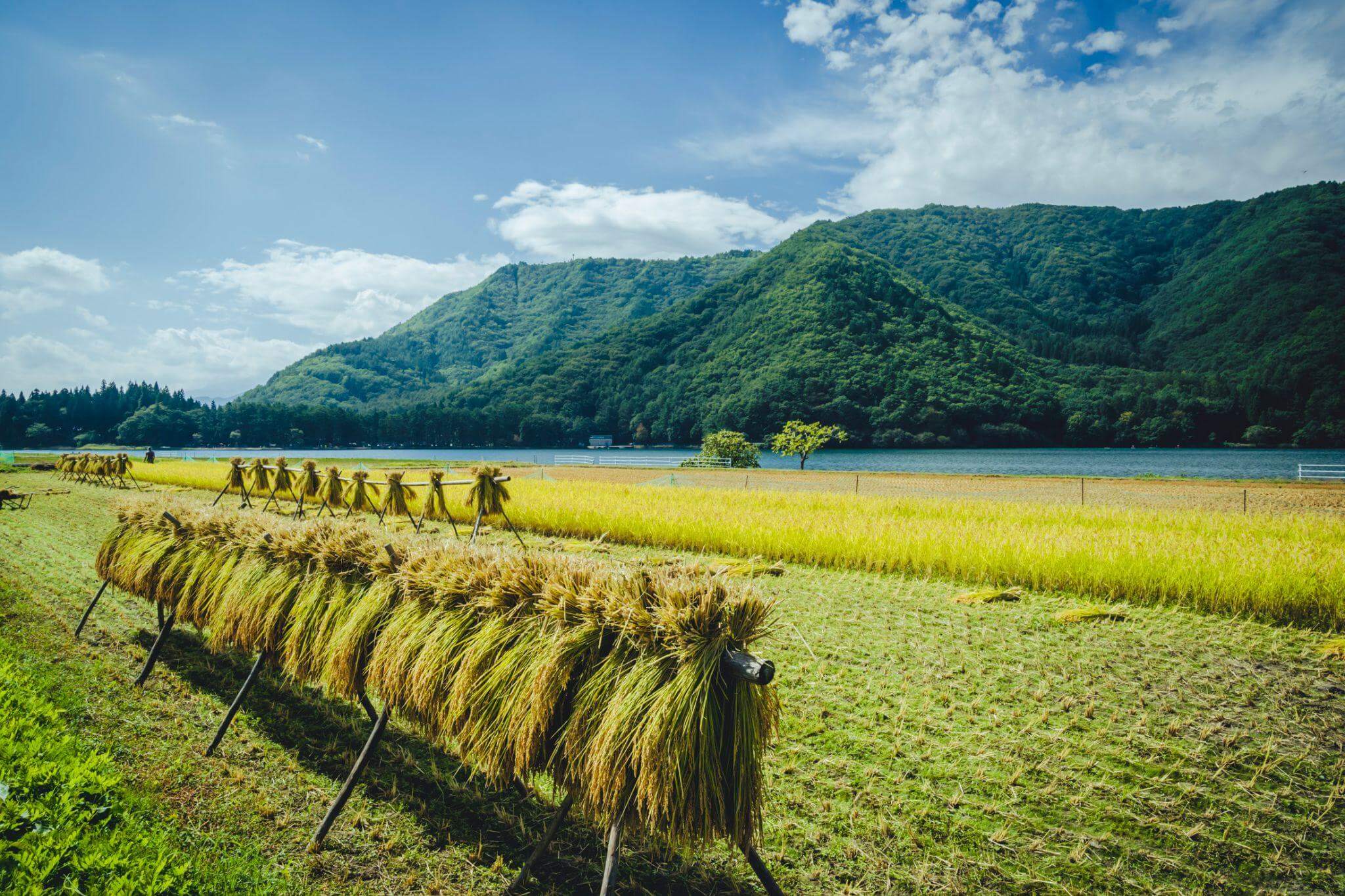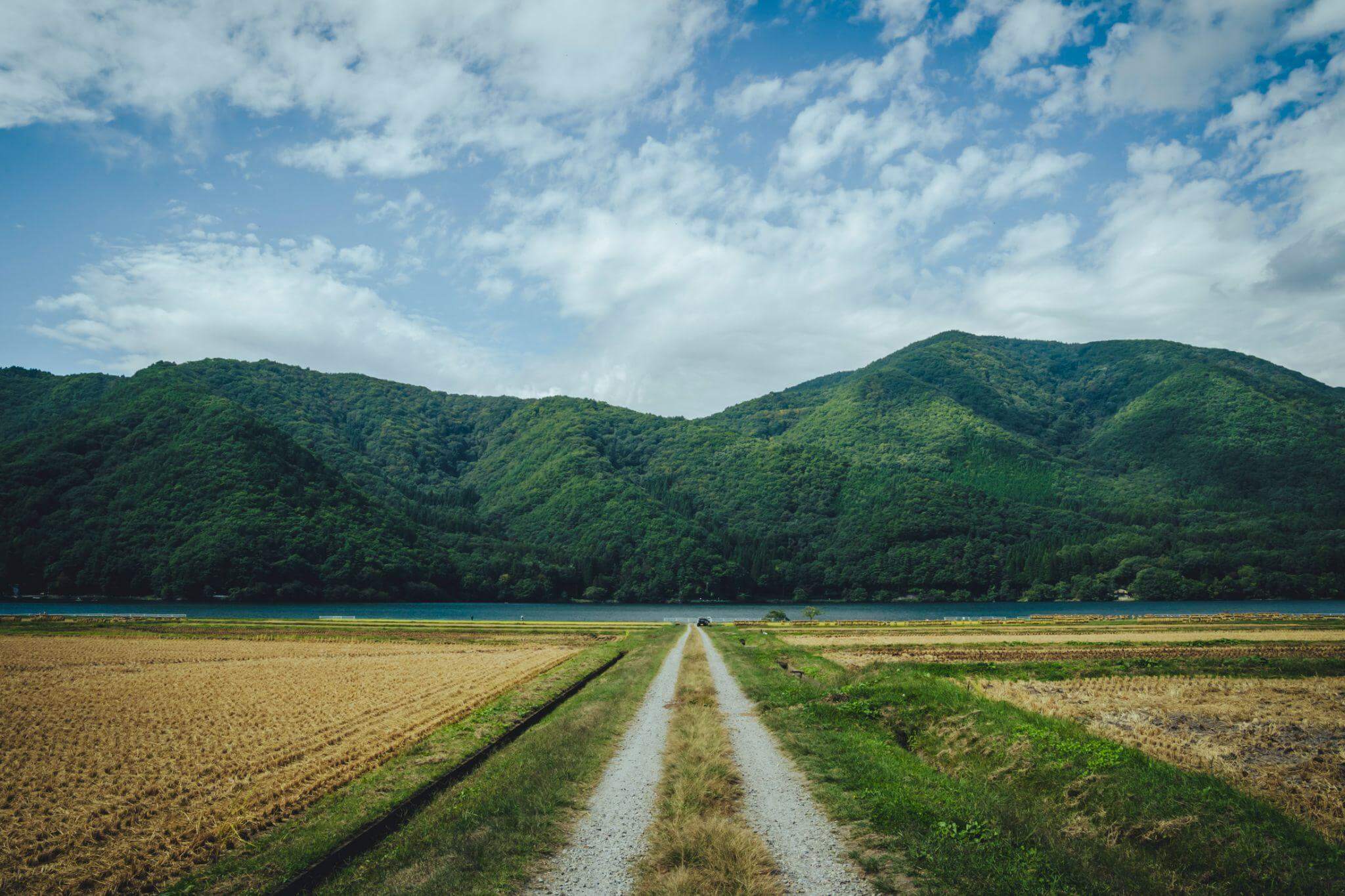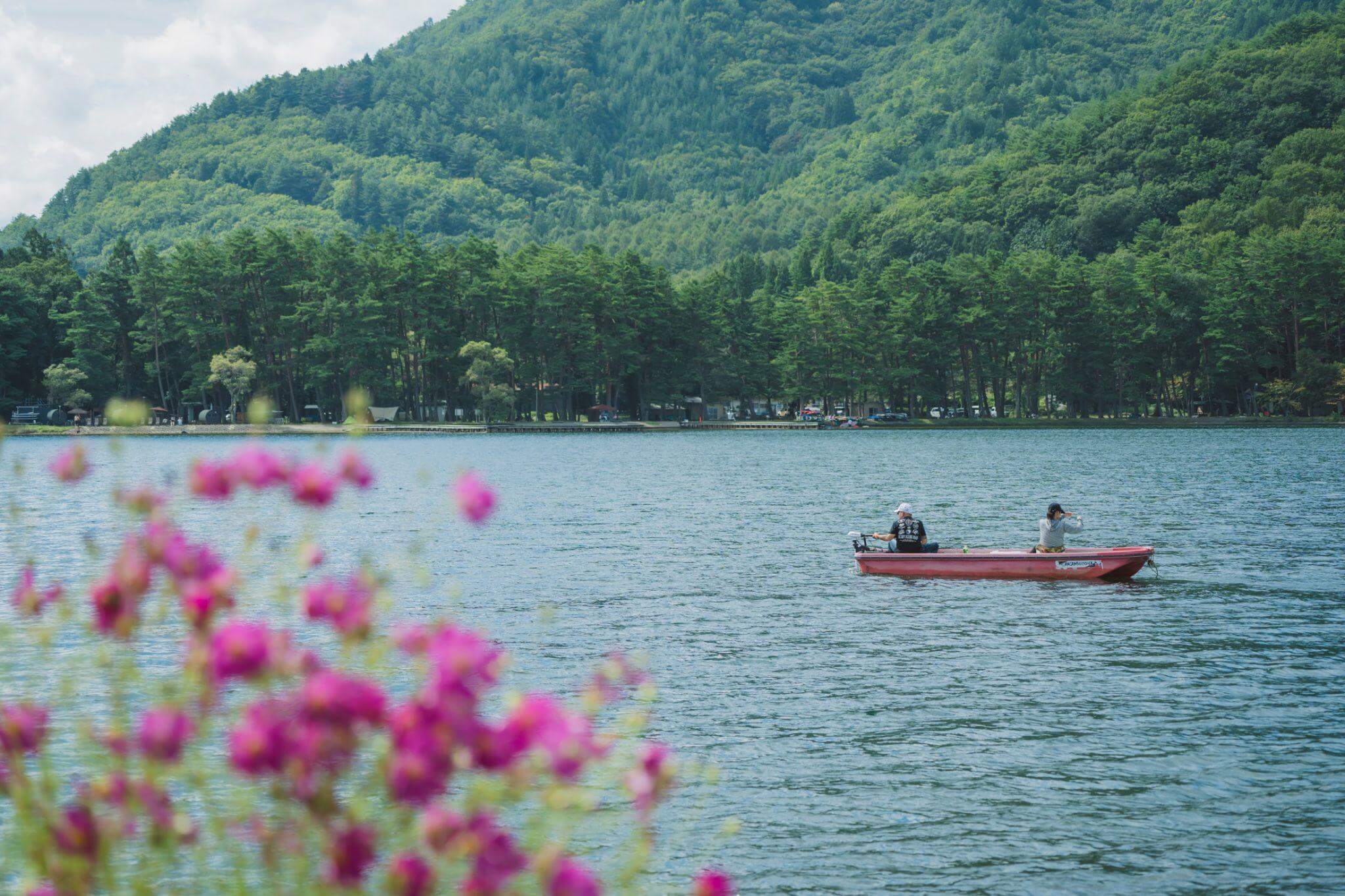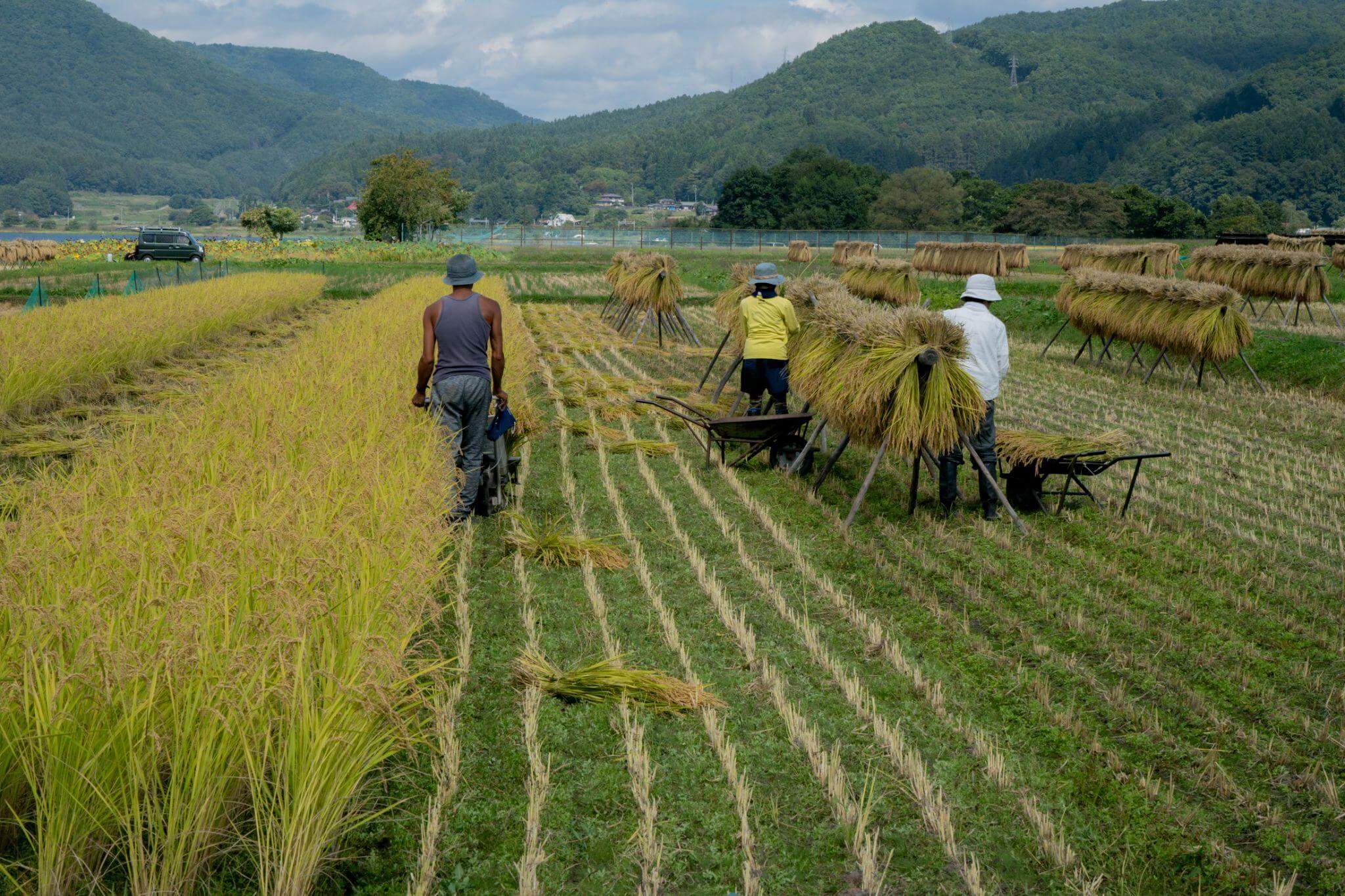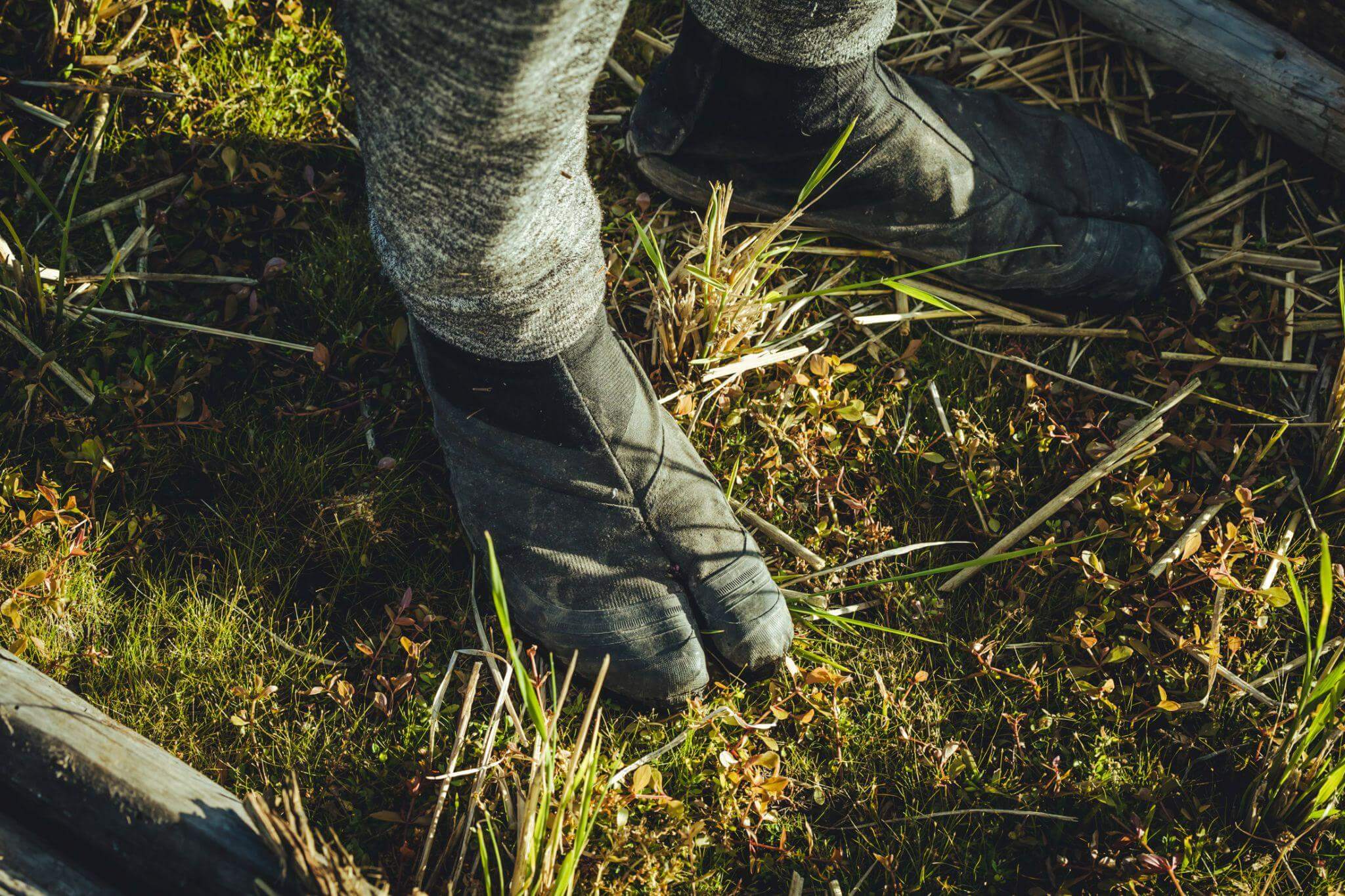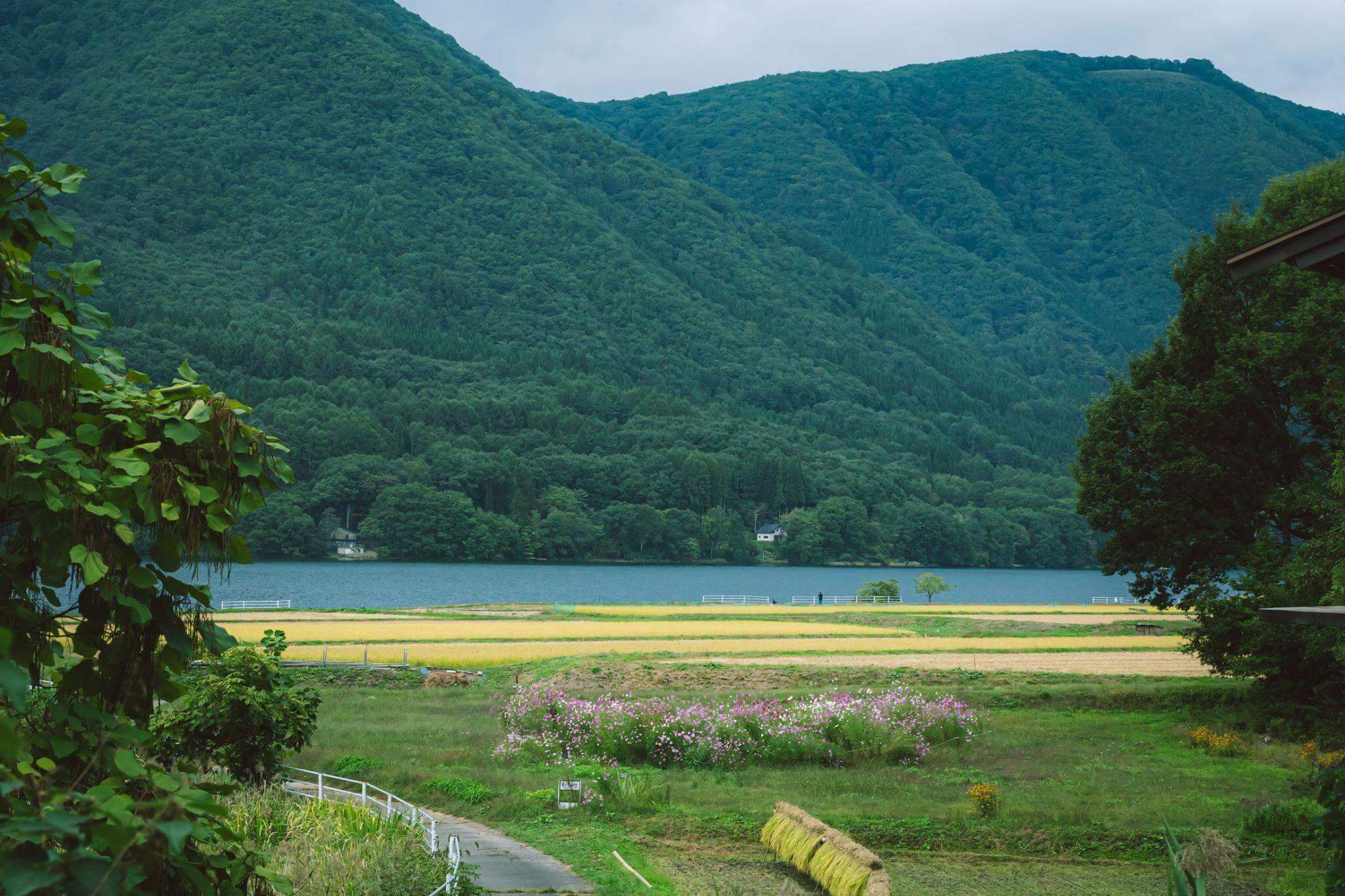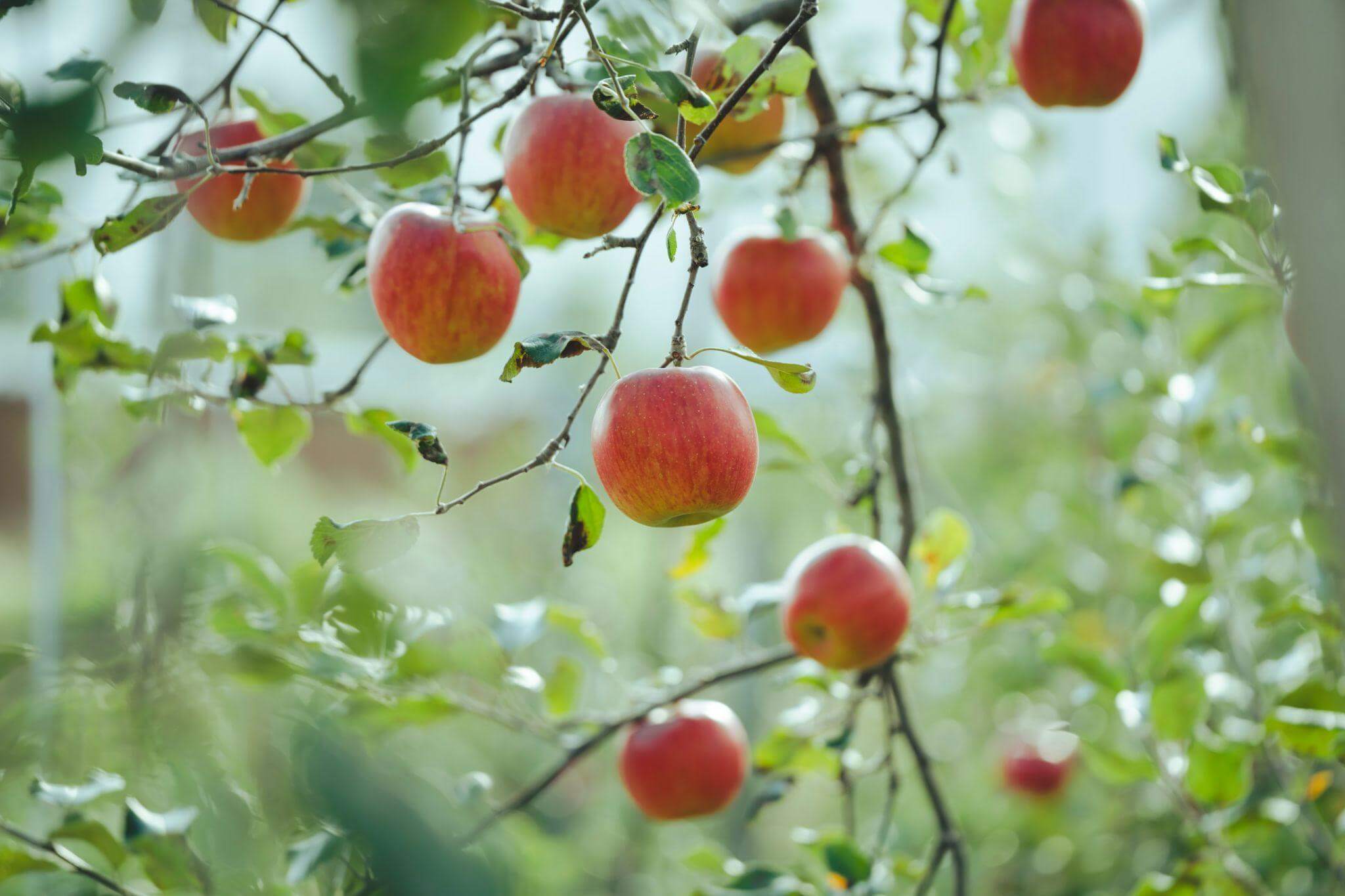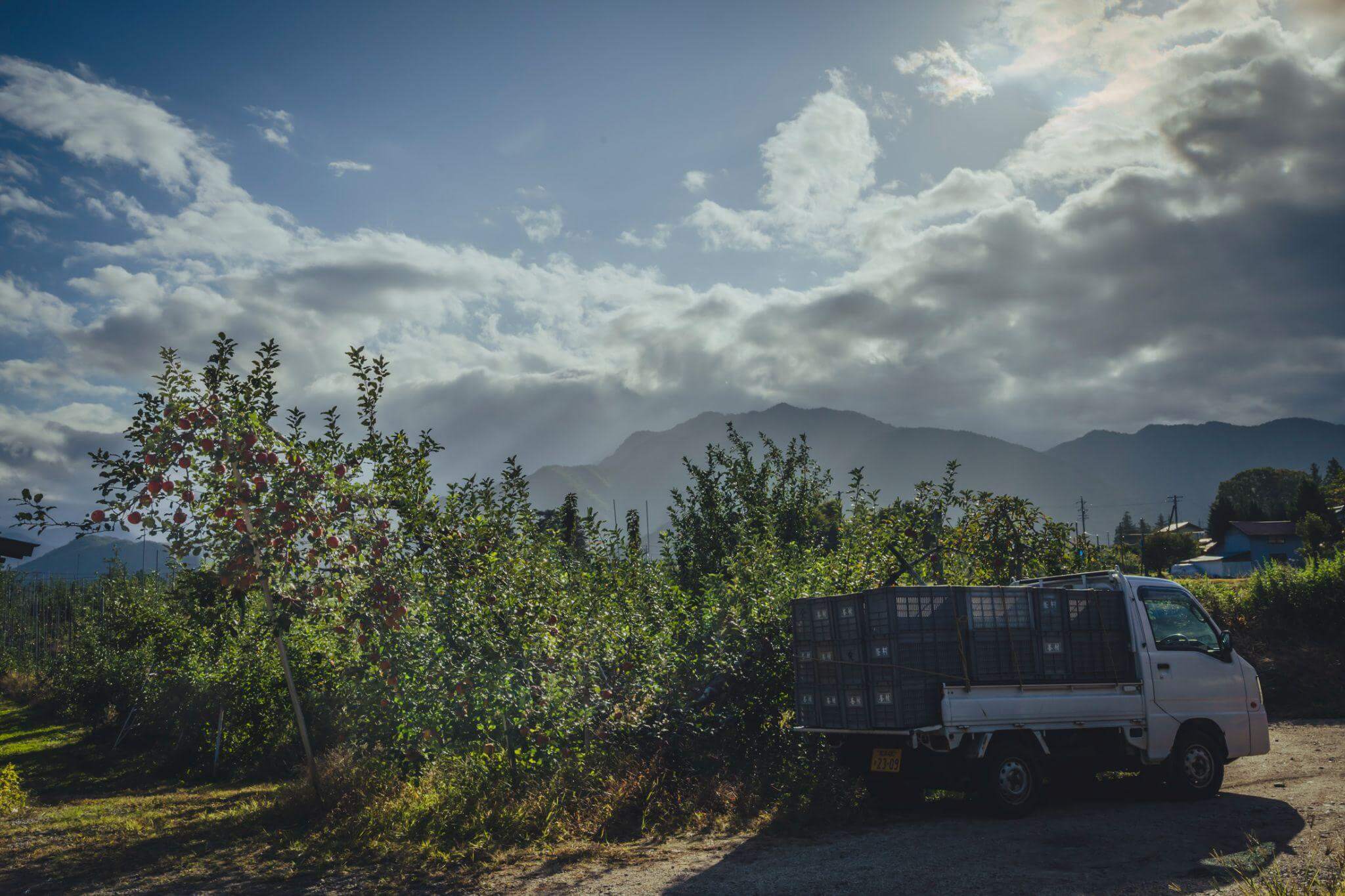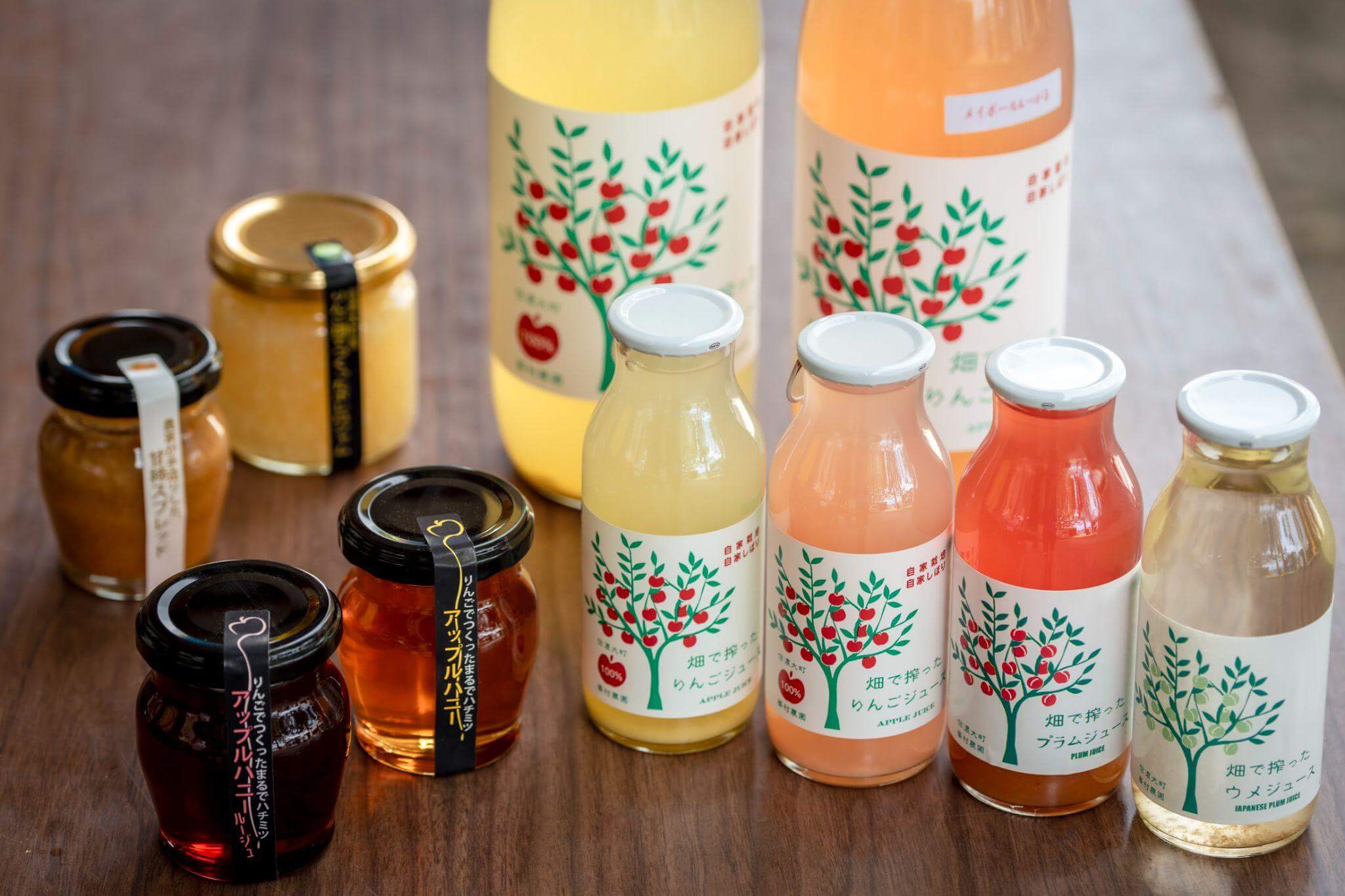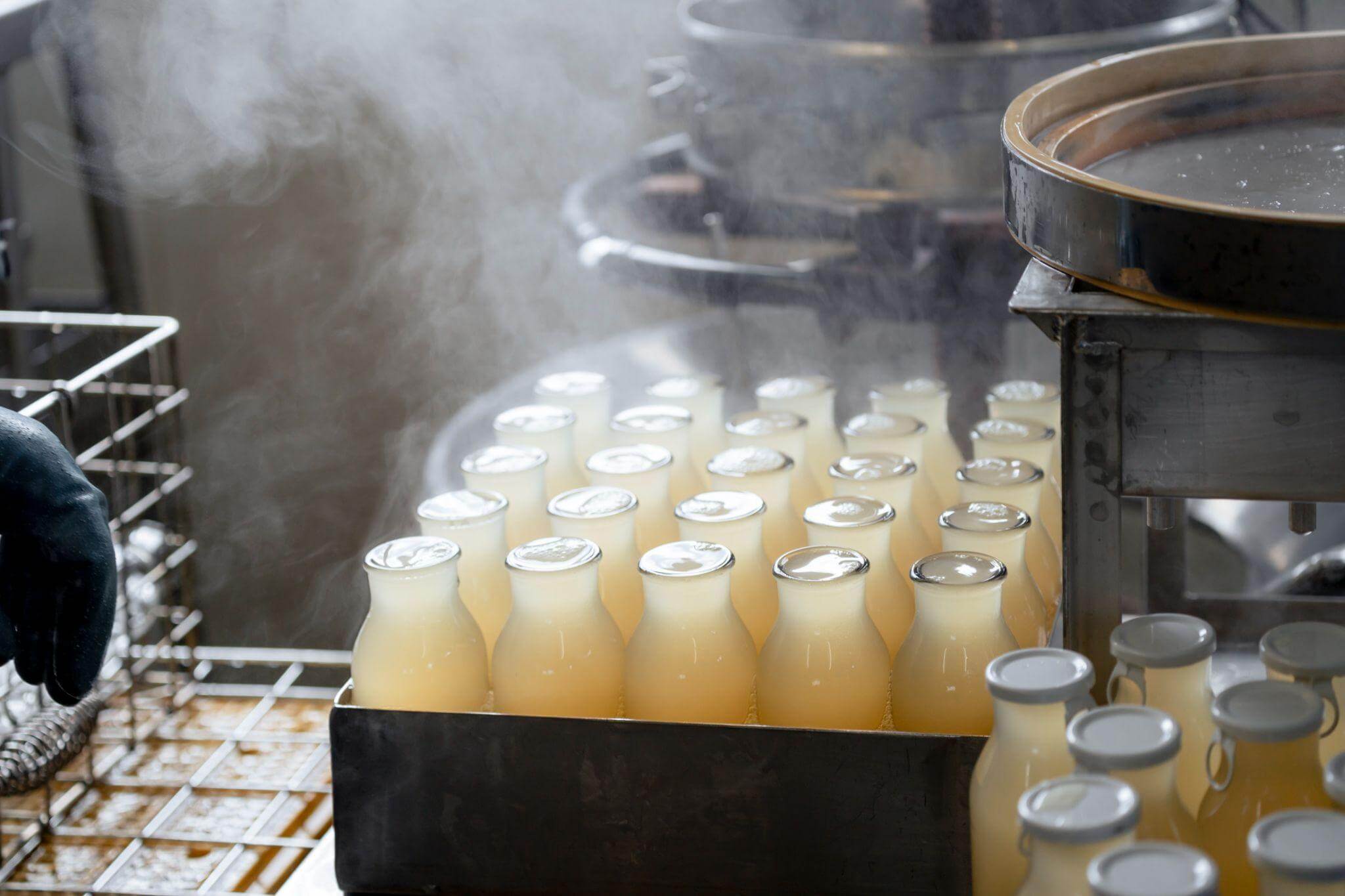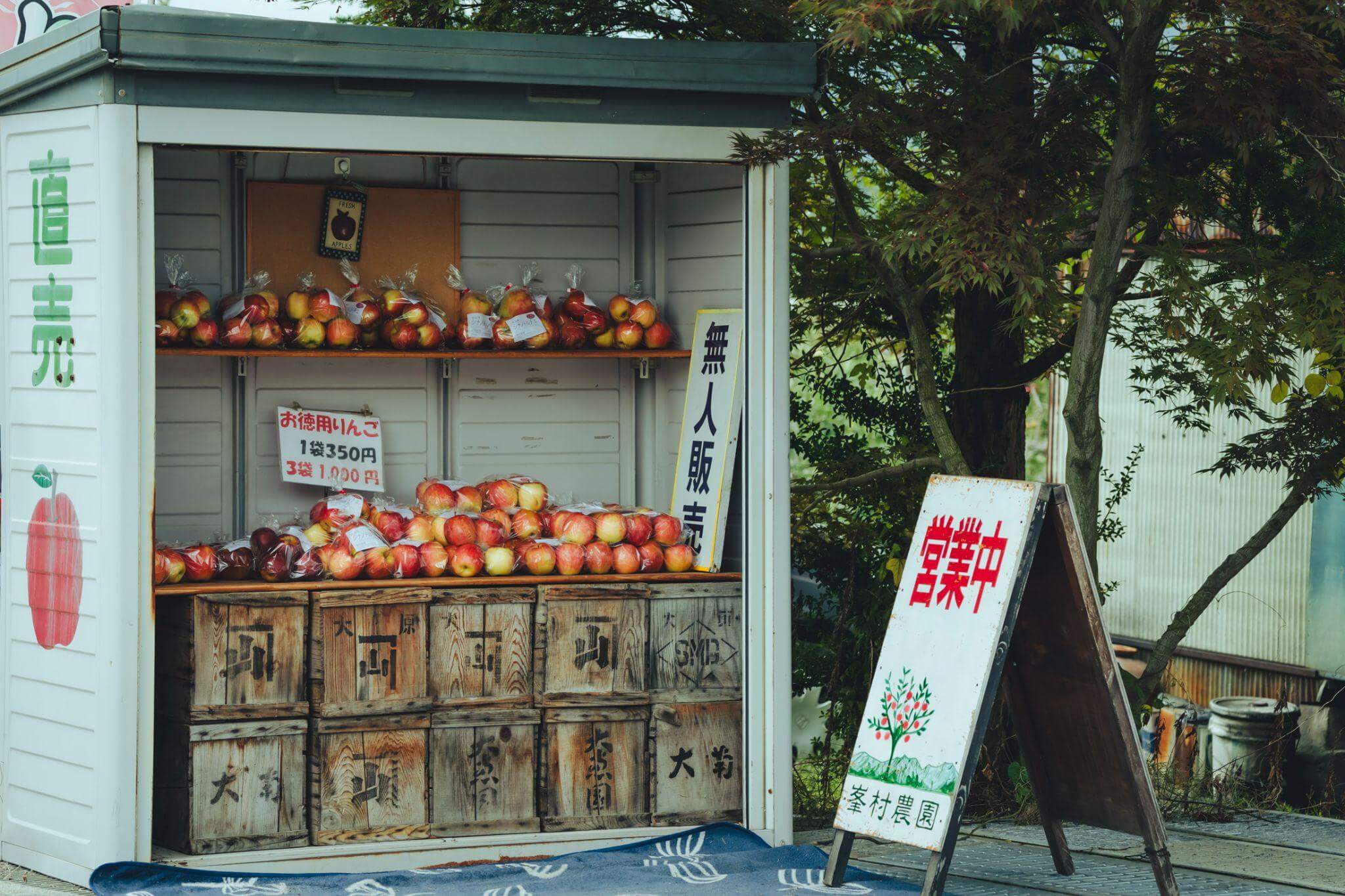The Delicious Agriculture of Omachi, Nurtured by Mountain Water and the Contrasts in Temperature
Delicious agriculture in Omachi, nurtured by the difference in temperature and mountain water
Organically Grown Rice Cultivated with Mountain Water on the Banks of Lake Kizaki
Organically Grown Rice Cultivated with Mountain Water on the Banks of Lake Kizaki
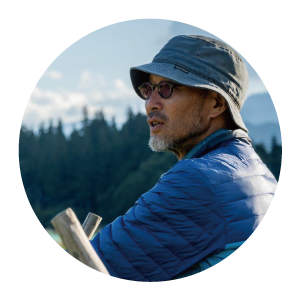
Mr. Koji Yamamoto
Rice farmer

Mr. Koji Yamamoto
Rice farmer


In mid-October, we visited the rice fields of Mr. Koji Yamamoto in Inao, located on the eastern shore of Lake Kisaki, where pesticide-free and fertilizer-free rice is cultivated. Standing with my back to Inao Station on the JR Oito Line, a vast expanse of rice fields stretches out against the backdrop of green lake waters and mountains.
While most rice fields have already been harvested, leaving only the rice stubble behind, Mr. Yamamoto's fields are in the midst of the harvest. They are waiting for the late-maturing rice to ripen fully before proceeding with the harvesting process.
The rice planted with wide space between rows and fewer plants per mound allows each plant to develop strong lateral roots. This enables them to withstand strong winds without falling over and continue absorbing plenty of nutrients until just before harvest. Because of their robust health, they are naturally resistant to pests and diseases, yielding delicious rice without the need for pesticides.
Mr. Yamamoto left his job at a company in Osaka and transitioned to a farming corporation, becoming independent as a flower farmer in 2000. He also started growing rice for personal consumption. At that time, pesticide-free cultivation was still rare, but there were many producers in the area with a high interest in organic farming. He began his journey by seeking advice from them.
The challenge with pesticide-free cultivation lies in weed control. Since 2003, Mr. Yamamoto has been practicing rice-duck farming, gradually increasing the cultivated area while employing methods such as deep-water weeding and rice bran weeding. Eventually, the deliciousness of his rice spreads by word of mouth.
"I also enjoyed flower cultivation, but since it was for market distribution, it was difficult to feel the response from customers. In contrast, with rice, I can see the joy on the faces of those who eat it, and I can work while remembering their smile" says Mr. Yamamoto. Now, around 100 people across the country eagerly await Mr. Yamamoto's rice.
For the past few years, he has stopped using the rice-duck farming method and has also been practicing fertilizer-free cultivation. This decision came about when the safety of duck feed and organic fertilizers was questioned, and proving their safety became difficult. "I anticipated a decrease in yield, but I couldn't ignore the issue." Now, He’s using only chopped straw after threshing and his own rice bran to prepare the soil.
In Inao, near the Iyari Wetland, water springs from various places without being affected by human activity, nourishing the rice fields. "I like it here because we can use mountain water. Fertilizer-free cultivation thrives better. Despite the heavy snowfall, if you want to grow rice, Inao is the place to be.”
While working at a sake brewery during the winter, Mr. Yamamoto reads books and reflects on the next rice cultivation. That’s how passionate he is about growing quality rice and above all, he smiles, "Because I want to eat rice that tastes great."
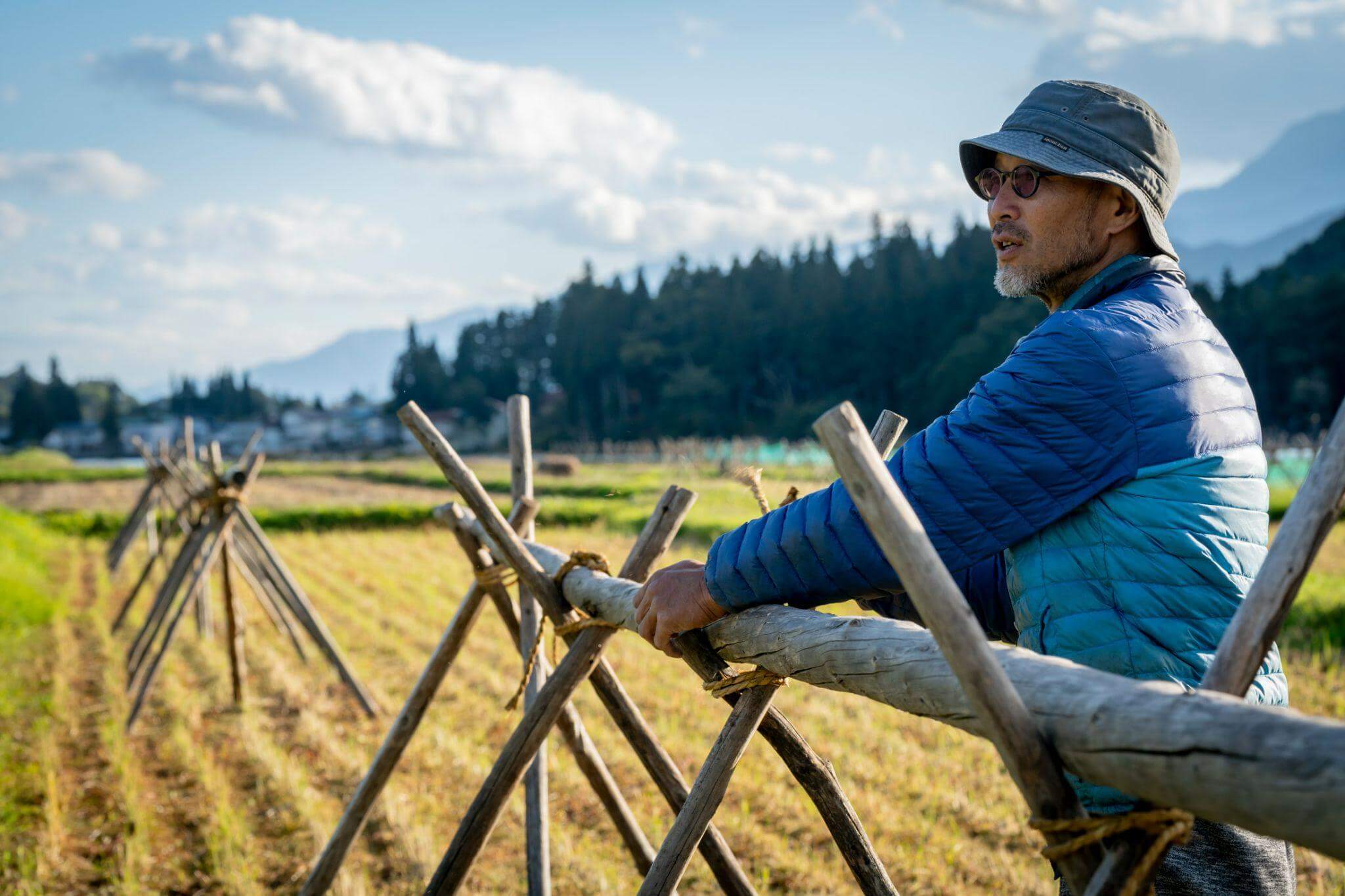
Mr. Yamamoto, originally from Matsumoto City, graduated from a university in Kyoto, then worked for a company in Osaka before transitioning to farming in Omachi.
(Text as of December 31, 2023)

Mr. Yamamoto, originally from Matsumoto City, graduated from a university in Kyoto, then worked for a company in Osaka before transitioning to farming in Omachi.
(Text as of December 31, 2023)
Apples grown with mountain water ripen and turn red in the cold.
Apples grown with mountain water ripen and turn red in the cold.
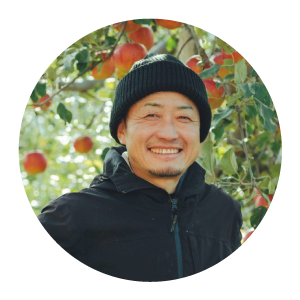
Mr. Tadashi Minemura
Minemura Farm

Mr. Tadashi Minemura from Minemura Farm


The city of Omachi experiences an inland climate characterized by drastic temperature variations. Summers are cool with little rainfall and dry air, while winters are severe with heavy snowfall. These conditions align well with the requirements for growing delicious apples.
In addition to the low rainfall, the winds blowing down from the Northern Alps help to sweep away moisture, thus reducing the occurrence of pests and diseases. The large temperature difference, not only between summer and winter but also between day and night due to the high altitude, contributes to the excellent quality of the apples. Apples grow during the day and rest at night, accumulating nutrients. As a result, the apples have a crisp texture, good keeping quality, high sugar content, and a well-balanced flavor profile with a hint of acidity.
The low rainfall in summer is advantageous for apple cultivation, but the "new dwarf cultivation" that has been recommended in recent years requires watering because of the shallow root system. In this respect, Omachi City has agricultural water flowing in all directions, and it is easy to obtain water from anywhere in the city.
Minemura Farm is located along Prefectural Route 45, also known as the Oomachi Alpine Line, which leads to the Kurobe Dam. They have two locations within the city. Ohara Farm uses water from the Northern Alps water system, and Mikkamachi Farm uses water from the Iyari water system.
The third-generation farmer, Mr.Tadashi Minemura, has been a leading figure in the apple farming community. He has been accepting young producers for training, introducing new techniques like new dwarf cultivation, and together with his colleagues, established processing facilities to promote agribusiness. However, there was a time when Mr.Minemura turned away from agriculture himself.
After completing graduate school, Minemura immediately started farming, but disagreements with his predecessor led him to leave home and work for a company in Nagano City. However, he realized that he wanted to sell something he had made himself, rather than what others had produced. This realization prompted him to return to the family business at the age of 25.
"The conditions for apples to turn red are ripeness, exposure to sunlight, and cold weather. This year, they took a while to develop color, but recently they have started to turn red."
As harvest time approaches, Ohara Farm is in full swing. Apples arrive one after another in trucks, where they are visually sorted first then sorted by size using machines, and then packaged.
Apples that are not suitable for fresh consumption are sent to the processing facility next to the work area, where on this day, apple juice was being made. Meanwhile, cars continue to arrive one after another seeking apples for direct sale. Many of these cars have license plates from outside the prefecture, leading Mr. Minemura to wonder, "I wonder why? Could it be that social media outreach is working well?"
Handling phone calls, attending to visitors, coordinating tasks for the staff, and personally selling the products he has made. Mr. Minemura is somewhat tired due to the busy schedule, often working late into the night. However, he smiles proudly as he says, "I love the harvest work. Even though it's busy, this is the most enjoyable time for me."
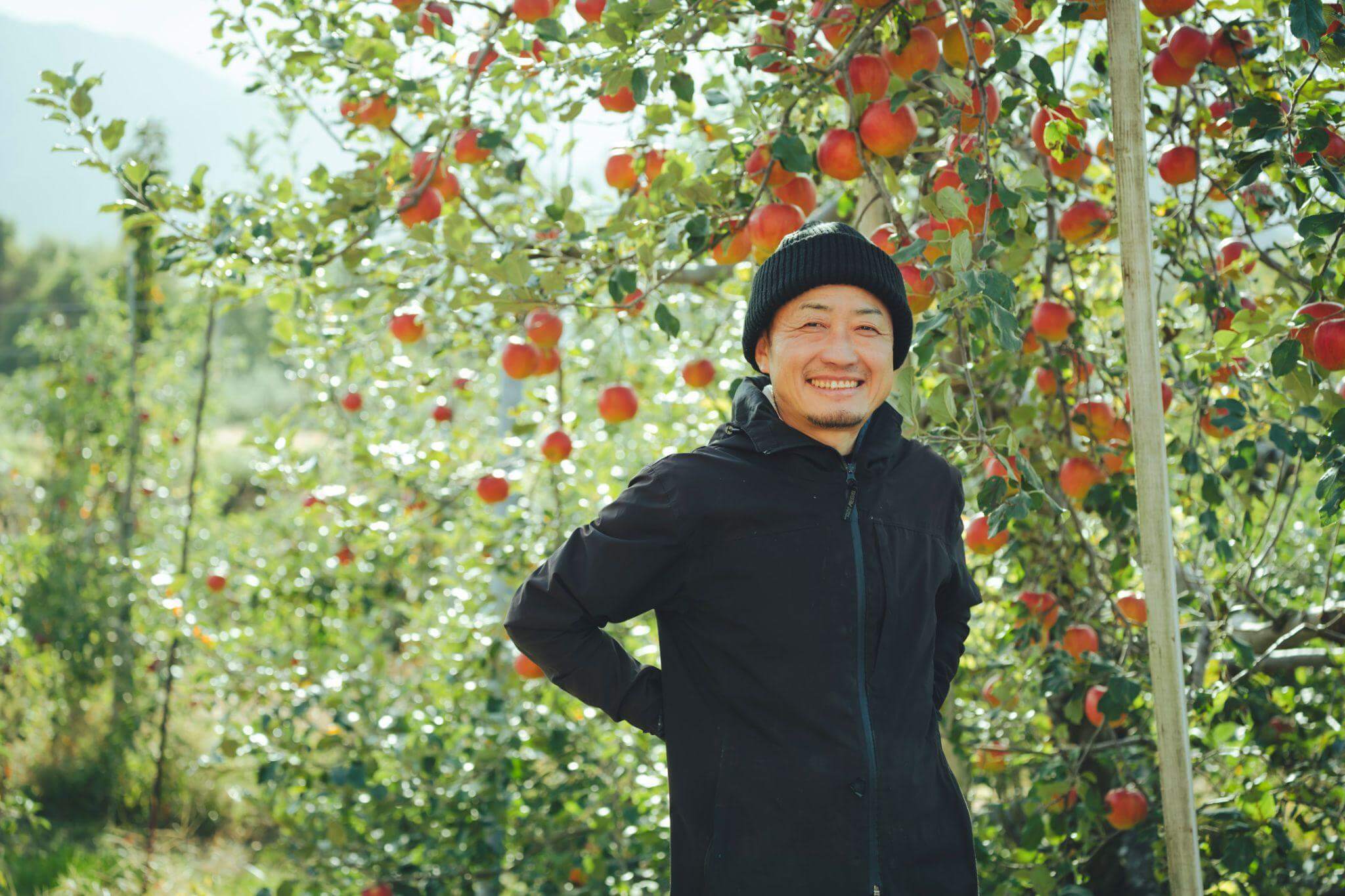
For Mr. Minemura, while the harvest season is enjoyable, he finds that "the best time is probably the winter after it's all over."
Minemura Farm
Address 5895-1 Omachi, Omachi-city, Nagano Prefecture
Phone 0261-22-3454
(Both text and data as of December 31, 2023)

For Mr. Minemura, harvest time is fun, but "the best part is the winter after it's over.”
Minemura Farm
Address 5895-1 Omachi, Omachi-city, Nagano, Japan
Phone 0261-22-3454
(Both text and data as of December 31, 2023)
\Click here for tour details and application/
Click here for tour details and application


